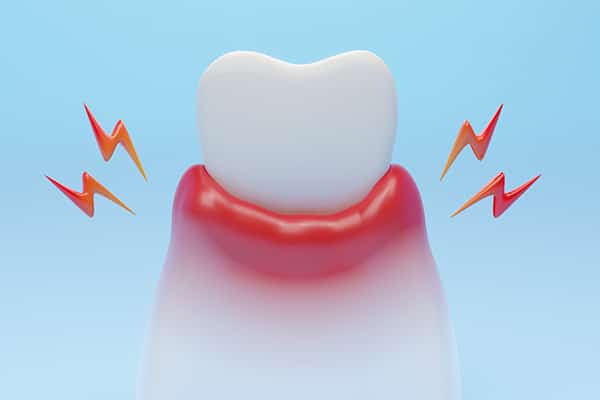Gum disease, also known as periodontal disease [fun fact: peri (around / dontal (tooth)], is an oral health condition that affects the tissues surrounding and supporting the teeth, mainly the gums and bone. It is primarily caused by bacterial growth and infection in the gums, and is one of the most common diseases in the world.
Early stage gum disease is called gingivitis, in which the gums become red, swollen, and may bleed easily during brushing or flossing, but the underlying bone is not affected. If left untreated, it can progress into periodontitis, a more severe form of the disease where the gums start to recede, forming pockets that are vulnerable to infections. As the body’s immune system responds to the infection, it can lead to the breakdown of the bone and connective tissues that hold the teeth in place. The progression of the disease can become irreversible and result in tooth loss, thus leading to a poorer quality of life.

Nonetheless, it is not all grim. Gum disease is preventable and treatable if discovered early enough. Both gingivitis and periodontitis have various levels of severity – from mild or moderate through to severe, and diagnosis is made by dental professionals through a thorough assessment of periodontal charting, dental radiographs as well as detailed medical history. Other lifestyle factors such as smoking, diabetes, prolonged usage of steroidal medication and even osteoporosis can also have a negative impact on gum disease. Upon diagnosis, a treatment plan is then formulated.
For gingivitis, debris (calculus and plaque) affecting the disease is usually located nearer to the surface of the gum, usually on the enamel. The patient will be prescribed scaling and polishing treatment as well as customized oral hygiene instruction to effectively eradicate the disease.
In the case of periodontitis, the debris is deeper from the surface of the gum and is usually coating the root surfaces of the teeth. In this instance, the prescribed treatment plan would be scaling, root planing and polishing as well as a customised oral hygiene instruction to suit the severity of the disease. Treatment may be done under local anesthesia and seeks to remove diseased root surfaces and smoothen it, in order to allow the gum a conducive surface to heal against.
Gum disease prognosis typically depends on its severity at the time of diagnosis. The milder the condition, the more likely it is to be reversible. Irreversible gum disease cannot be cured and can only be managed thereafter through a consistent follow up routine to maintain an optimal level of oral hygiene, which is key to ensuring the disease does not worsen.
As the old saying says, prevention is better than cure. It is important to brush your teeth at least twice a day and floss at least once a day to remove food particles and plaque. See your dentist once every six months for a thorough check up and cleaning that can’t be done by simply brushing and flossing at home.
These simple steps go a long way to ensure your long term teeth and gum health, which in turn can save you money from costly dental work stemming from serious oral diseases in future. Above all, a healthy smile is a beautiful smile – what’s there not to love about it?
If you are experiencing symptoms related to gum disease and would like to schedule a dental checkup, don’t hesitate to visit our clinic today.


